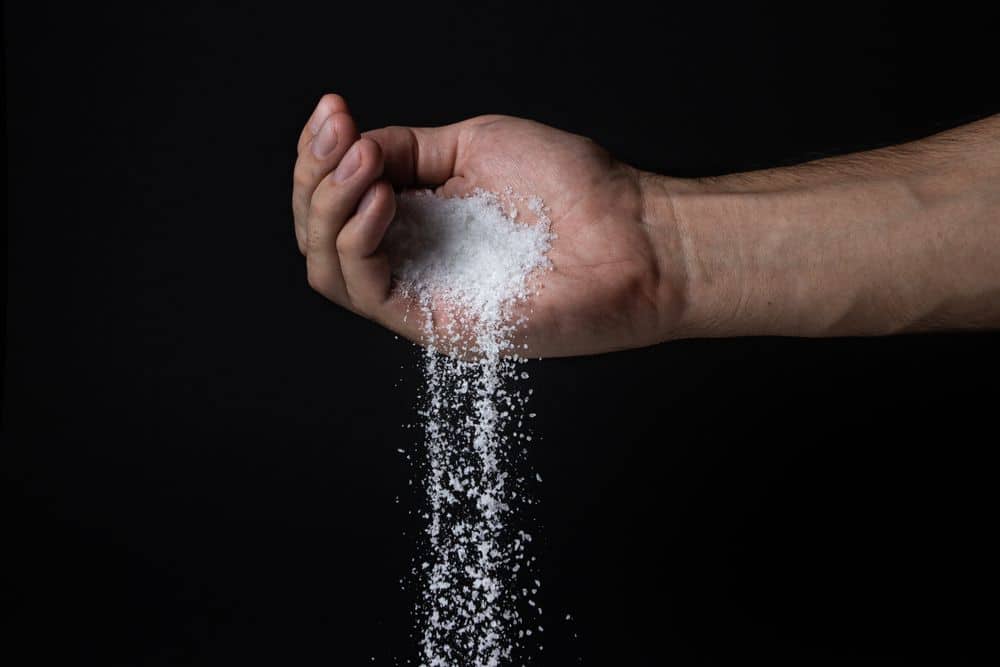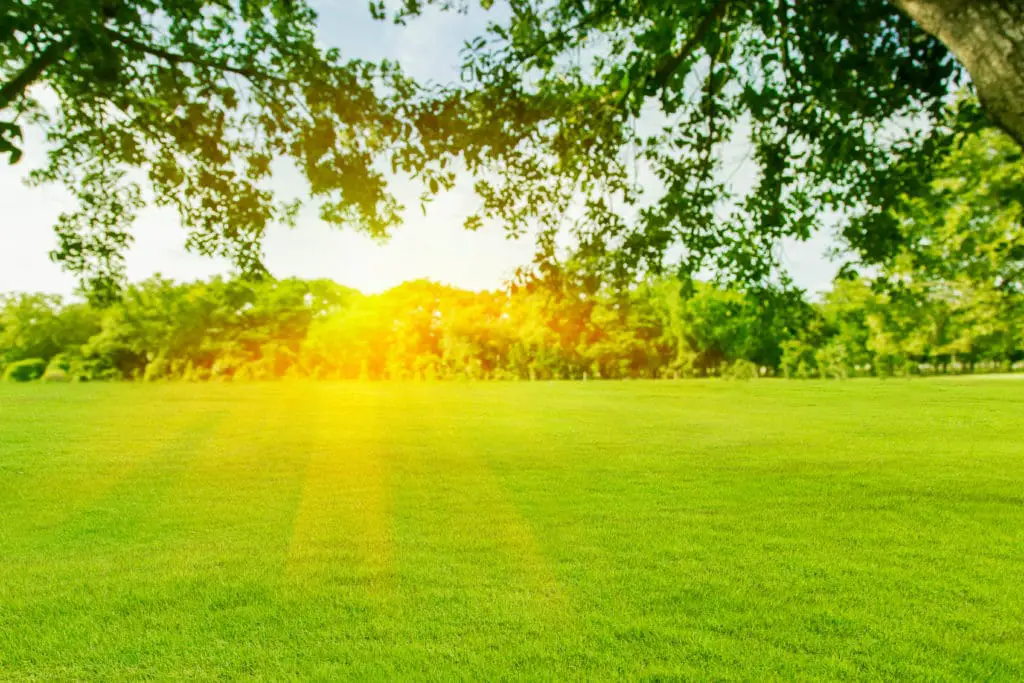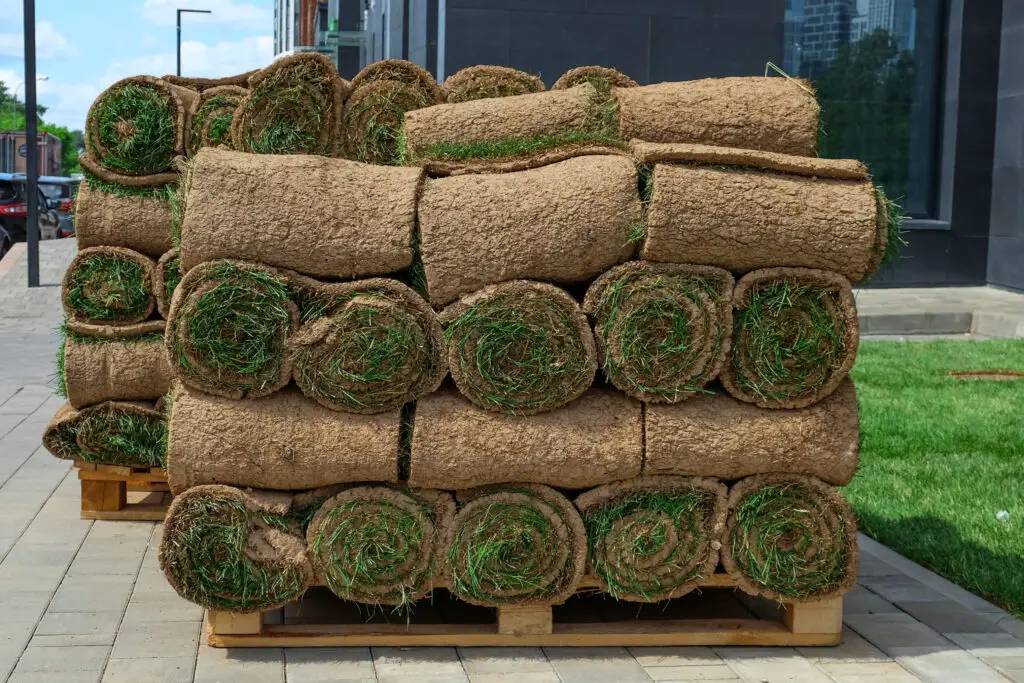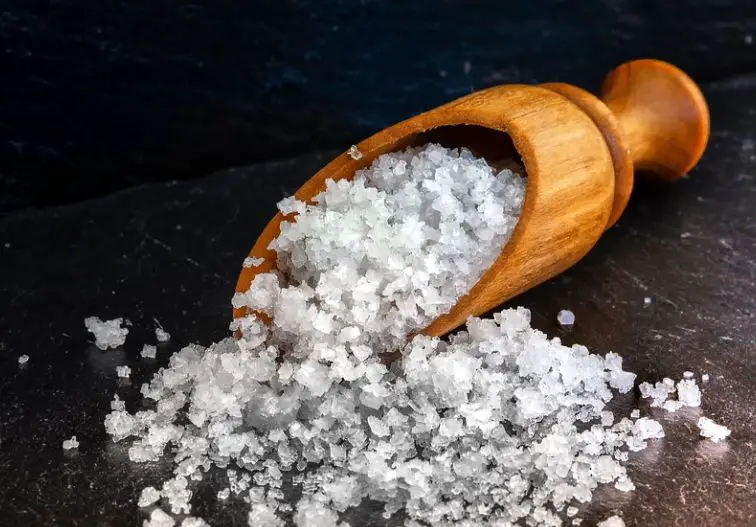Salt can be quite harmful to your lawn. A salt build-up in the soil might result in brown spots where the new Grass cannot establish itself properly.
Putting Salt on Grass
Putting salt on Grass will kill the Grass and any adjacent plants or groundcover within a short period. Salting Grass can damage soil and make it uninhabitable for plants for many years. The addition of lime can help counteract the harmful effects of salt, then give your lawn a good soaking in water for a couple of days.
As an experienced lawn care specialist with many years of experience, I’ve seen firsthand the damage salt can cause to grass and other plants. I’ve worked with many homeowners and landscaping companies to maintain healthy lawns and gardens.
In researching this article, I consulted with other industry professionals, including soil scientists and agronomists, to ensure the information presented was accurate and up-to-date.
I understand that readers rely on this information to make informed decisions about their lawn care, which is why I take great care to provide high-quality, trustworthy information. If you have any questions or concerns about the information presented, please don’t hesitate to contact me for additional information or resources. Thank you for reading!

If your lawn has been accidentally exposed to a small amount of salt, it is not necessarily too late to salvage the situation.
The addition of lime can help counteract the harmful effects of salt in cases where it is not present at multiple levels, such as a driveway rock salt spill, or runoff.
By hand, with a trowel or shovel, remove as much salt as you can from the area, then apply some lime to the site.
For some time, refrain from watering the area because the water will convey the salt to the surrounding Grass, causing even more damage to your lawn.
Putting salt on Grass will kill the Grass and any adjacent plants or groundcover within a short period. The practice of salting Grass can damage the soil and make it uninhabitable for plants for many years to come.
Small Applications
Under some circumstances, it is feasible to use salt in minimal amounts or in areas where you are not concerned about harming the chances of future growth.
in minimal amounts or in areas where you are not concerned about harming the chances of future growth.
In most cases, applying a small amount of table salt to an unattractive plant, in the cracks of a sidewalk or driveway, or to a particularly well-rooted patio weed would not cause any significant damage to the rest of your Grass.
A very tiny amount, combined with water, should be poured at the base of the plant or plants to be treated. Within two or three days, they will begin to wither and perish from the inside out.
The Underlying Mechanism of Action
Sea salt kills plants by sucking water out of their root systems and preventing them from re-absorbing the moisture that has been taken from them.
kills plants by sucking water out of their root systems and preventing them from re-absorbing the moisture that has been taken from them.
They take up the sodium, which salinates their plant cells and causes them to become even more parched. In essence, the plant dies as a result of dehydration.
If exposed to salt, Grass will die like that of Grass that has not been watered, with the Grass drying out and becoming brown.
Is It Possible to Kill the Grass by Putting Salt on It?
As life-saving as this material can be, it can also be incredibly harmful to your Grass if not used properly. Salt has a detrimental effect on Grass, and it has the potential to kill it.
Although it can potentially damage any lawn you may have planted; it can also keep Grass from growing for several years afterwards.
Chemical herbicides have their own drawbacks, including the poisoning of soil microorganisms and the contamination of water supplies.
Because of sodium chloride toxicity, weeds will be killed permanently if too much salt is applied to them.
If you want to get rid of weeds in around ten days, you can apply rock salt or a highly concentrated salt solution directly on the weeds, and they will die.
Weeds can be controlled using salt in roads, walkways, patios, pavements, gravel, and rocky areas, among other places.
What Is the Best Way to Use Salt to Kill Weeds?
A strong salt solution and salt crystals are excellent at eliminating weeds permanently.
An alternate remedy, which may include substances such as vinegar and dawn dish soap, can be used instead, especially if you’re going with a liquid application.

Here’s how to apply salt to your Grass to kill weeds and prevent new growth:
Application of a Liquid Salt Solution
Step 1: In a 3:1 ratio, add the salt to the water.
Step 2: Stir thoroughly to thoroughly combine the solution and ensure that no undissolved crystals remain.
Step 3: Spot-spraying the weeds in your yard, on pathways, and your driveway will be effective.
Step 4: Follow up with this treatment again after 7 to 10 days.
This recipe can be enhanced by adding dish soap and white vinegar, making the DIY weed killer stronger and more quick-acting.
As a surfactant, dish soap will aid in the adhesion of the salt solution to the plant’s surface.
Vinegar is a potent organic herbicide that may be made at home. When combined with salt, it produces a highly effective weed killer.
When administered, the treatment can control weeds permanently. It is preferable to use a salt solution on hard surfaces rather than on areas with bare soil.
What is the Length of Time it Takes for Salt to Destroy Grass?
The salt will take at least ten days to eliminate the weeds. This duration may vary depending on the amount of rain that has fallen.
The concentration of the salt solution sprayed also affects this duration, as does the size of the weeds you are attempting to eliminate from your yard.
Two to three salt applications may be required to eliminate weeds.
It’s important to remember that the higher the concentration, the sooner you’ll be able to manage weeds with salt for the longest time possible.
For example, when applied in large quantities, rock salt can linger in the soil for years, preventing plants and weeds from establishing a permanent root system.
Take Steps to Prevent Lawn Damage from Salt
Maintaining the health of your lawn can help it survive a minor input of salt. Still, if huge volumes are dumped on it, such as in the case of coastal solid ocean breezes or when you apply salt to eradicate weeds in undesirable locations, your lawn may not survive.
Because salt is a nonselective herbicide, any salt that comes into contact with your lawn will kill it almost quickly.
If you’re using salt to kill weeds, covering the Grass with tarps or plastic can help prevent wayward salt crystals from getting on the Grass and causing damage.
Combating the Effects of Salt
When it comes to battling salt damage on your lawn, water can be your best ally, especially if you live near the water’s edge. Because the salt remains in the soil, it will be impossible to grow fresh Grass until you remediate the soil.
As soon as you notice signs of salt damage, thoroughly wet the area, which may require soaking it for several hours.
Keep a consistent daily watering schedule over the next three to four days. This removes the salt from the soil, washing it down and away from where it will no longer impact your Grass and garden.
Replanting

Since deep watering can wash away nutrients and salt, preparing the area for new Grass is necessary before it is established.
Remove the dead Grass and soften the soil using a steel rake. Then, add a seed-starter fertilizer to the soil to help the seeds germinate.
It is important to thoroughly mix in the fertilizer before watering the soil to begin releasing nutrients.
Plant the Grass seed or lay the sod as soon as possible on the damp ground, and water it thoroughly to aid in the germination of the seeds or the establishment of the sod’s roots in the soil.
You can also read how to Minimize Deicer Damage with Salt Tolerant Plants based on research conducted by Pennstate Extention.
based on research conducted by Pennstate Extention.
Final Thoughts on Putting Salt on Grass
In the ground, salt prevents your Grass from getting essential nutrients and moisture, and salt that comes into contact with the Grass blades can create brown burns, which impairs the Grass’s capacity to absorb nutrients from the sun.
Don’t forget to water thoroughly if salt gets onto your lawn, and you will keep your lawn healthy and damage-free.
Read More:
12 Tips to Get Rid of Grub Worms on your Lawn 
Will Grass Seed Grow If Not Covered?
Ten Weeds with Purple Flowers on your Lawn

